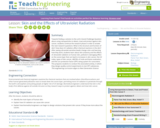
Read about phenylketonuria and the tests used to diagnose it in those who might have inherited this recessive trait.
- Subject:
- Science
- Material Type:
- Lesson
- Provider:
- Kimball's Biology Pages
- Date Added:
- 08/07/2023

Read about phenylketonuria and the tests used to diagnose it in those who might have inherited this recessive trait.

Polymerase Chain Reaction - or PCR - is known as one of the most ubiquitous and powerful techniques in life science laboratories. PCR is a highly sensitive and selective method to produce many copies of a particular piece of DNA. This pathway details applications of PCR, its mechanism and primer design, and demonstrates how the method is used in the lab.

Enzymes speed up chemical reactions by factors of at least a million. This project investigates some of the factors that affect how fast enzymatic reactions occur.

Towards finding a solution to the unit's Grand Challenge Question about using nanoparticles to detect, treat and protect against skin cancer, students continue the research phase in order to answer the next research questions: What is the structure and function of skin? How does UV radiation affect the chemical reactions that go on within the skin? After seeing an ultraviolet-sensitive bead change color and learning how they work, students learn about skin anatomy and the effects of ultraviolet radiation on human skin, pollution's damaging effect on the ozone layer that can lead to increases in skin cancer, the UV index, types of skin cancer, ABCDEs of mole and lesion evaluation, and the sun protection factor (SPF) rating system for sunscreens. This prepares students to conduct the associated activity, in which they design quality-control experiments to test SPF substances.

Listen to this podcast introducing the function of enzymes in the human body. [0:38]